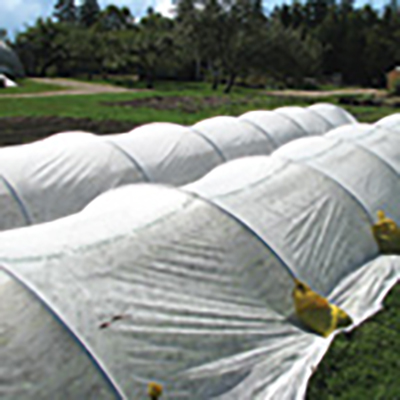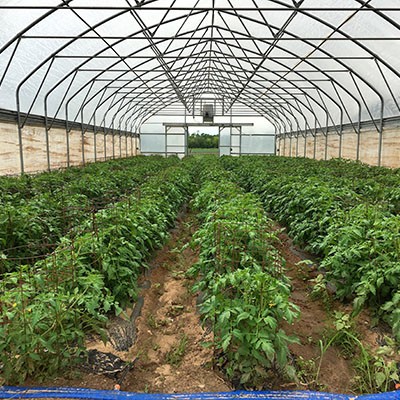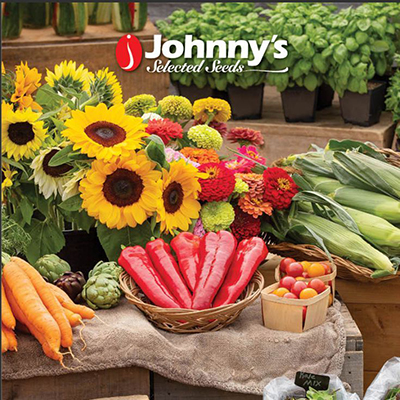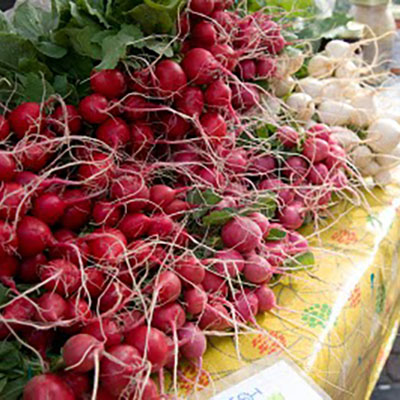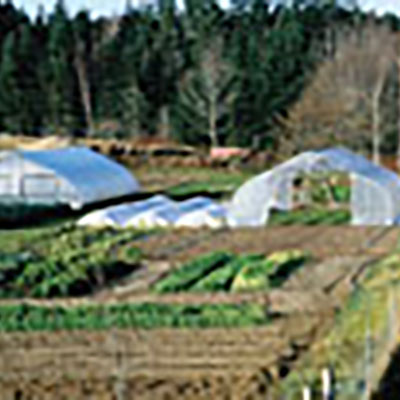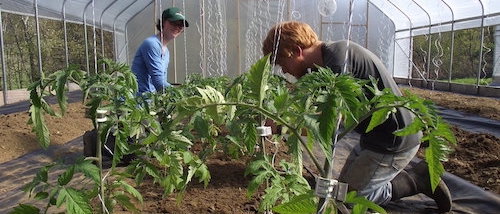Growing for Market in partnership with Johnny's Selected Seeds has created a library of expert information about growing and selling vegetables and flowers. Links in the article will take you to johnnyseeds.com.
Subscribe to Growing for Market for more great ideas about growing and marketing!
For more topics in the series, click on Market Farming Basics in the left column.

![]()
Do A Soil Test
Soil tests can be done once the soil has thawed, provided it isn't too wet. For vegetables and flowers, soil samples need to be taken to a depth of 6" to 8". The annual soil test should analyze your soil for pH, nitrogen, phosphorous, and potassium. For vegetables, the soil pH should be between 6.1 and 6.9. Most soil nutrients are available at a pH of 6.5, but when the pH rises above this value, nutrient elements such as phosphorus, iron, manganese, copper, and zinc will become less available. When soil pH is below 6.5, manganese can reach a toxic level for some sensitive plants.
Soil testing is an inexpensive way to determine what kinds and amounts of soil amendments you need to apply. Not only will it save you money on fertilizers, it also can prevent over-fertilization that results in runoff and water contamination.
Soil tests can be done by your Cooperative Extension service, or you can purchase a kit to do your own testing. Johnny's has pH test kits and N-P-K plus pH kits. Separate tests should be done on soils that look different or have been used differently. Areas where plant growth has been poor also should be tested separately.
The results of the soil test will tell you the major nutrients that need to be added to your soil. Even when those amendments have been made, you still need to provide a shot of fertilizer when transplanting seedlings. Most growers rely on a solution of seaweed/kelp or fish emulsion to water in transplants. The readily accessible nutrients in these products give plants a nutrient boost until their roots get established, thus avoiding transplant shock.
Be Prepared for Frost
Your meticulous planning and preparation can be laid to waste with one night of unexpectedly low temperatures. Don't let an untimely frost ruin your young crops. Have a supply of row cover that you can pull over the plants when frost threatens. If the night is still and the plants are small, you can probably lay the row cover flat on top of them. If plants are taller or if the evening is breezy, row cover can abrade the plants' growing tips if it is laid directly on top of them. In that case, the row cover needs to be held above the plants on wire hoops or wickets.
In areas where temperature fluctuations are the norm in spring, you should consider planting early crops under Quick Hoops covered with row cover. These low tunnels provide a warm and stable environment where young plants thrive. Learn more about making Quick Hoops.
Visit Johnny's Selected Seeds for more free information about growing produce, herbs, cover crops and flowers.•
Subscribe to Growing for Market for the latest news and ideas.
Reprinted from JSS Advantage March 2010
